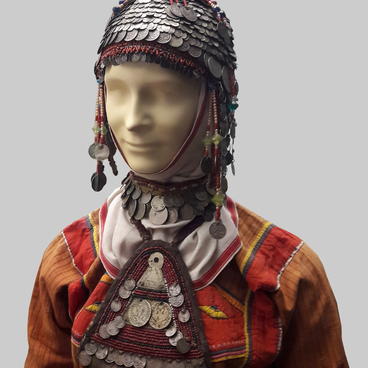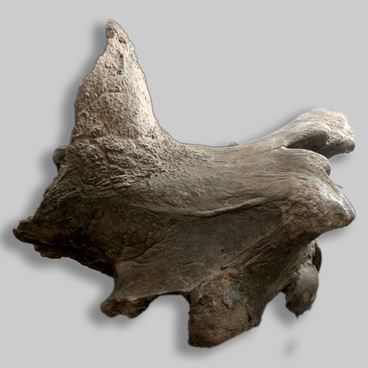Surpan is a Chuvash female long towel-like dress made of thin canvas or fabric with ends decorated by woven, embroidered ornaments, trimmed with braid and lace. Surpans were worn by married women, which completely covered the head and neck, with decorated endings lowered onto the back. It was believed that if a woman came out ‘bare-headed’ in the hallway, an evil spirit could grab her by the braids and drag her upstairs. To ‘light up your hair’, that is, to put it out or to go with your head open, is a great shame and sin. It was believed that the exposed hair of a woman brings misfortune and harm. According to custom, the surpan had to be tied early in the morning, even for pasture, otherwise women were considered naked.
Surpan of the lower Chuvashes was a strip of homespun thin linen canvas, of different lengths and decoration in different regions. The headdress could be up to 3 meters long and up to 35 centimeters wide.
In many villages, the canvas for the surpan was woven with a longitudinal red border. At both ends, stripes of red homespun were sewn, where an embroidery or a strip of bright purchased material was added to the ‘brany’ or elective pattern, along which there was also embroidery, made very often with a chain stitch (in the form of a ‘chain’). The ‘brany’ technique (from the Russian word ‘take’, ‘choose’) consists in the use of a second weft (a system of threads running across the fabric), most often colored; the pattern went along the entire width of the canvas and turned out to be convex, and from the inside it had a negative reflection.
The elective technique is a type of complex weave in which the patterned weft was not laid from edge to edge of the canvas, but in separate sections, often of different colors. The elements of the pattern in the fabrics of the elective technique were located more freely, leaving a large space of the linen background, which was never the case in ‘brany’ weaving.
The technique of patterned weaving was often used to decorate surpans. Patterns in the form of diamonds or oblique crosses were usually grouped into a clear symmetrical composition against a white or red background. Geometric patterns made by Chuvash girls on ordinary wooden looms amaze with their precision, complexity and harmonious interaction of shapes and colors.
Multicolor patterns were woven with woolen threads over a red background. Craftswomen used up to 14-15 colors and shades of patterned thread — red, yellow, lemon, bright green, grassy green. If a colorful pattern was performed on a red background, then it was necessarily shaded with black and white.
The surpan was completed with white lace with points (in rare cases, the lace was black) or a fringe of colored threads.
In addition to khushpu, the grassroots Chuvash would wrap their head like a turban with a shorter headband surpan — a surpan tutri with ornamented ends.
The technique of patterned weaving was often used to decorate surpans. Patterns in the form of diamonds or oblique crosses were usually grouped into a clear symmetrical composition against a white or red background. Geometric patterns made by Chuvash girls on ordinary wooden looms amaze with their precision, complexity and harmonious interaction of shapes and colors.
Multicolor patterns were woven with woolen threads over a red background. Craftswomen used up to 14-15 colors and shades of patterned thread — red, yellow, lemon, bright green, grassy green. If a colorful pattern was performed on a red background, then it was necessarily shaded with black and white.
The surpan was completed with white lace with points (in rare cases, the lace was black) or a fringe of colored threads.
In addition to khushpu, the grassroots Chuvash would wrap their head like a turban with a shorter headband surpan — a surpan tutri with ornamented ends.



